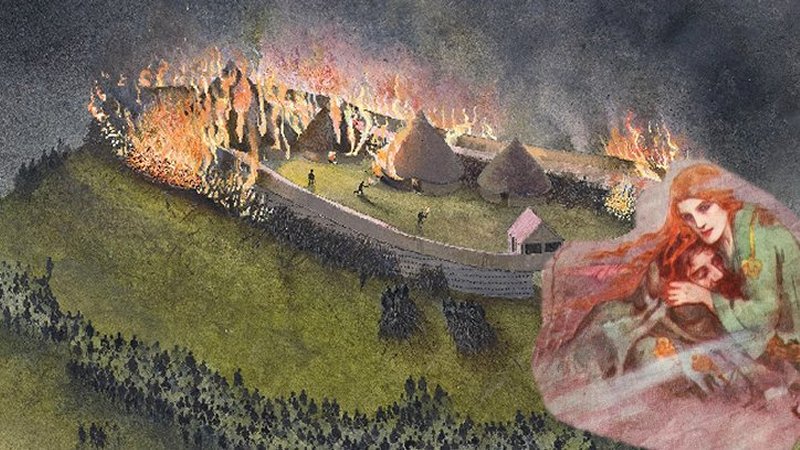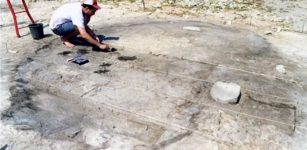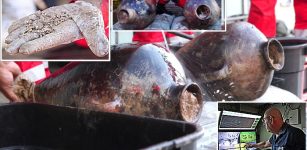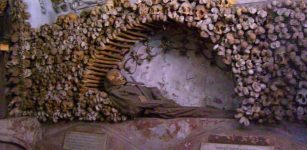2,500-Year-Old Large Untouched Scythian Burial Ground Unearthed In Khakassia, Siberia
Conny Waters – MessageToEagle.com – More than 2,000-year-old burial complex has been excavated in the south of Khakassia by a team of Siberian archaeologists.
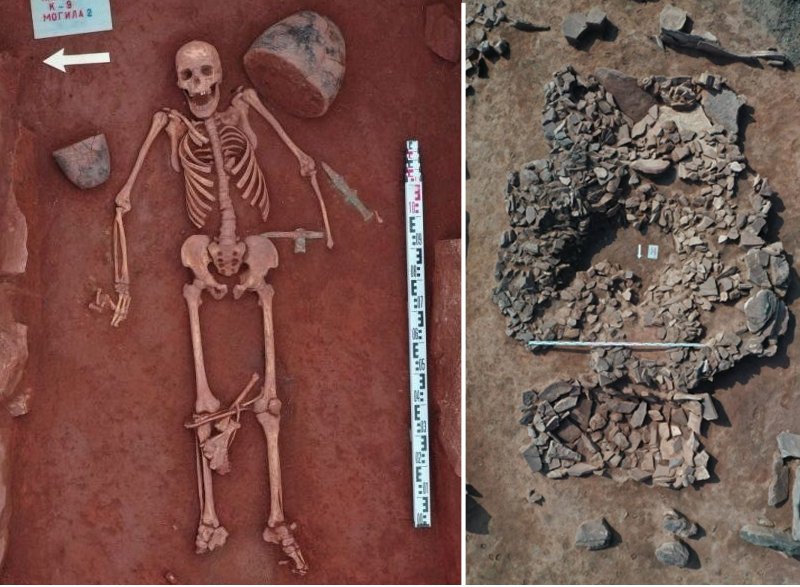 Left: Individual burial of a warrior; Right: The central part of the mound and the preserved part of the enclosure. Image source
Left: Individual burial of a warrior; Right: The central part of the mound and the preserved part of the enclosure. Image source
One of the graves contains a warrior and in the other were placed the bodies of four dead – a man, two women and a child. The man and one of the women lay stretched out on their backs. Near each of them, scientists discovered a large ceramic vessel with a wide rim of excellent preservation.
Another woman was lying at their feet on the right side, in a crumpled position. She also had a small ceramic vessel and a comb with broken teeth, buried during her lifetime. Also next to the man were two sets of weapons, and the woman lying next to him – one, exactly the same.
The burial complex includes bronze daggers, knives, axes, mirrors, and a horny comb.
Archaeologists found a burial object of the Tagar culture dated to the early Iron Age and untouched by robbers. In one of the graves, the complete skeletons of four Tagarians were found in the position that it was at the time of burial.
The entire inventory was also intact and the grave was never robbed – neither by the contemporaries of the Tagar people, nor by alien tribes from Mongolia, nor by Russian treasure hunters.
Next to the deceased lay a bronze weapon, a round mirror and a miniature comb made of horn. It is noteworthy that the entire set of weapons, despite its ritual function, was full-size and real, and not reduced copies, as was often practiced in later Tagar burials.
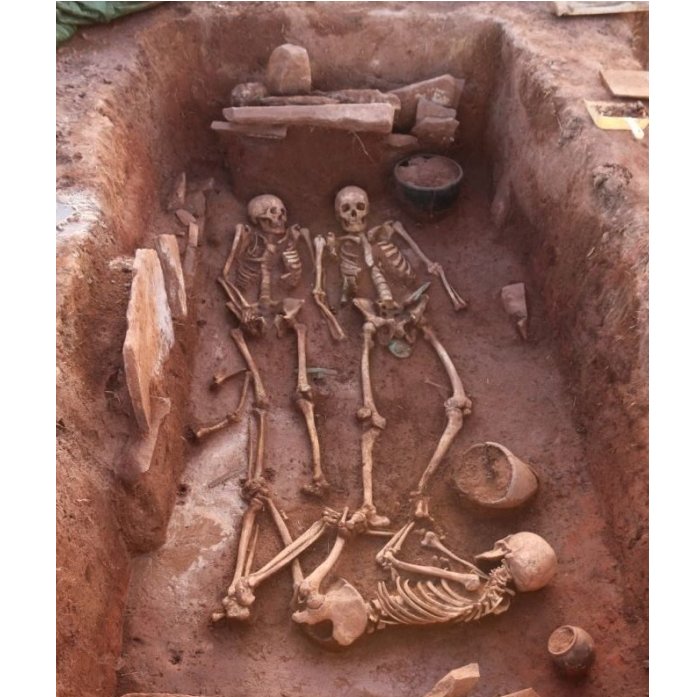 Group burial. image source
Group burial. image source
Already in the 4th and 3rd centuries BC, they began to put reduced versions of weapons or very tiny objects in burials, designed to symbolize the weapons of the deceased in the afterlife.
“Most often, archaeologists find repeatedly looted Tagar burials, with a minimum amount of things and parts of the skeleton scattered throughout the grave, – says the head of the excavation, senior researcher Yuri Vitalievich Teterin.
“In the central, apparently, the richest and most status grave of the mound, almost nothing of the things remained – everything was pulled out by robbers in ancient times. On the other hand, no one has penetrated the neighboring graves for more than two and a half thousand years, and we received a truly magnificent monument. The entire burial complex is just perfect for display in museum collections.
“Of course, we will not talk about the Amazons in the Khakass steppes; this is a speculative interpretation of Herodotus. However, the fact that the women had military weapons and were buried with them is a fact,” Oleg Andreevich Mitko, who leads the excavations, said in a press release.
“Most often, arrowheads are found in Tagar female burials, and this ranged weapon is more consistent with the image of female warriors. The long-handled chisel is a melee weapon, it is more suitable for brutal men than for their girlfriends. A woman armed with coin fights can be seen in Hollywood films. But still, the historical reality is far from modern mythologized interpretations of antiquity.
Part of the grave goods from the group burial. source
“The man and woman lying next to them were about 35 and 45 years old, and the woman at their feet was about 60 or older. Also in the burial were found the remains of a newborn baby no more than a month old, but fragments of its skeleton were scattered throughout the grave, possibly as a result of the activity of rodents, ”said Anthropologist Olga Batanina, an employee of the Paleodata laboratory of natural scientific methods in archeology.
“Of particular interest, of course, are the social relationships of these people. The presence of family ties between them, if any, will be shown by DNA analysis.
The Tagar culture for about five hundred years in the Scythian time (8th-3rd centuries BC) was widespread in the Minusinsk Basin (Republic of Khakassia and the southern regions of the Krasnoyarsk Territory) and in the northeastern part of the Kemerovo region, that is, within steppe and forest-steppe zones of the Middle Yenisei basin and its tributaries.
The Kurgan culture of the Tagar people has developed and changed for centuries. You can find completely different features in it – and giant earthen pyramids, and solid stone displays, and separate stone boxes, and spacious log cabins with stone floors.
For example, a huge mound with a two-meter embankment is the Tagar culture of the Saragashen stage. One of the stone steles found by Novosibirsk archaeologists depicts many small human figures.
According to the classification developed by the archaeologist M.P. Gryaznov, the Tagar culture is divided into four stages with a set of characteristic features for each of them.
It seems that in the discovered complex of the monument of different times, three funerary traditions of the Tagar culture appeared to archaeologists at once
“Initially (in the Podgornovo stage), a stone fence was built here from low slabs, inside of which two graves were made, and then, in the Saragashen period, the fence was expanded and two more grave pits were made inside it,” explains Oleg Mitko.
“The found coins have a shape characteristic of the Bainovsky stage of the Tagar culture,” the scientist said. He noted the uncharacteristic contracted position of one of those buried for the Tagar culture, which in this case testifies to her subordinate social position.
“To find out the relationship of these people, we need to examine a small ceramic vessel, laid for the crumpled buried woman. It differs from the vessels used for younger men and women, not only in size, but also in design. After a desk study of the chasing and this vessel, we will also find out whether these items belong to the Bainovo stage of the Tagar culture, the archaeologist concluded.
The excavations continue at the site.
Written by Conny Waters – MessageToEagle.com – AncientPages.com Staff Writer


